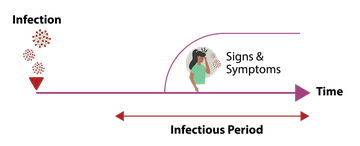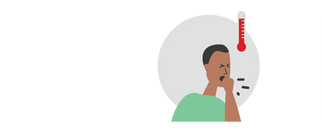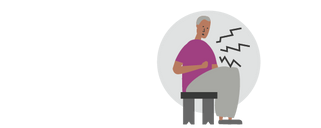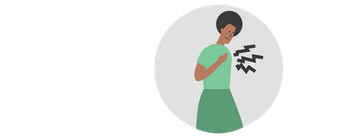Steps for Contact Tracing
Important terms to know for contact tracing include:
- A case is a person who has or may have COVID-19. A contact is someone who has been close to, touched or had contact with the body fluids/objects of a case.
- A contact tracer is a health worker who finds, interviews and monitors contacts for 14 days while they quarantine to see if they get sick🥴
- Isolation is separating cases from people who are not sick
- Quarantine is when contacts are separated from the public to see if they get COVID-19 symptoms or become sick
Keeping yourself and the community safe while contact tracing can be done by prioritizing certain groups. Start contact tracing with contacts most likely to expose others, followed by the contacts that are at higher risk for severe symptoms of COVID-19.
Priority 1: Hospitalized patients🏥, health workers👩🏼⚕️, people in congregate settings (care facilities, correctional facilities, homeless shelters, camp settings, schools), first responders👨🏼🚒, people in large households with limited space, and people living with others who may be at high risk for severe COVID-19.
Priority 2: Critical workers 👷🏼♂️, people over 65 years old 👵, people at high risk of severe disease, and pregnant women🤰🏼 .
Priority 3: people with symptoms 🌡who are not included in priority groups 1 or 2.
Priority 4: people without symptoms who are not included in priority groups 1, 2 or 3.
Step 1: Case Identification, Interviewing Cases and How to Identify Unknown Contacts
The first step to contact tracing is interviewing the person with COVID-19 (the case). This allows you to find those who may have been in contact with a case. To start the interview, first introduce yourself, explain how you got their information and what a contact is. Discuss any public settings they were in while they were unsure of their COVID-19 status and get the contact information for each of the contacts. Next, explain that in the infectious period, a person with COVID-19 can infect others from 2 days before symptoms started until 14 days after symptoms started (as shown in this picture). This applies even if the case is asymptomatic.

To help cases recall their contacts when they were unsure of their COVID-19 status, ask about their daily routine📅, people in their households and events they attended . Also ask them if they went to healthcare facilities🏨, places of worship, workplaces and schools or used public transport🚌. Checking their phone messages and calls can also help.
List all the contacts from the case and record 📋each contact's name, address, phone and relationship to the case, where exposure occurred, the date, how long⌚️ the contact lasted and how many times they were in contact. If a case went to a crowded public place before knowing they had COVID-19 it will be difficult to trace those contacts. In these cases, use the priority groupings listed above to focus your tracing. To do contact tracing in healthcare settings, find any staff who cared for COVID-19 patients without PPE and anyone who shared a room, bathroom or common area with COVID-19 patients. For public transport 🚌 ask authorities for passenger lists at the time of exposure. If that's not possible, make an announcement 📣 asking exposed passengers to contact you.
In congregate settings, interview the coordinator of the facility or shelter to identify residents, staff and visitors that were present at the time of exposure. For social events, schools, workplaces, and places of worship, contact the organizer to identify individuals who may have been exposed to COVID-19.
Step 2: Introduction and Notification of Exposure
When doing interviews with contacts, introduce yourself and the organization you work for. Confirm the contact's identity ✔️and reassure them that their information will be kept confidential. Only share their information if medically necessary. Explain that they were exposed to COVID-19, keeping the identity of the case private, even if the contact asks you 🤐. Have empathy and listen👂 to their concerns. Answer their questions with facts.
Step 3: Gathering Key Information
Record contacts' full name, home address, phone number and alternative contact details. Also collect date of birth/age, sex, occupation and preferred language.
Step 4: Providing Quarantine Guidance
Explain to contacts that contact tracing keeps their family and community safe. Also explain that they will need to go into quarantine for 14 days. When a patient is in quarantine, you will monitor ✍️ their symptoms and quickly report to your health facility should they get sick. Early detection helps to slow the further spread of COVID-19 in the community. Advise patients in quarantine to follow the steps for staying safe in quarantine. If contacts have no COVID-19 symptoms they must quarantine for 14 days and stay home. If they develop COVID-19 symptoms, they must get tested 🔬and isolate. If they test negative, they must still finish the 14-day quarantine.
Contacts without symptoms must also quarantine for 14 days and stay home. They should not go to work, attend events or go shopping. If a contact tests positive, refer them for case investigation. If testing is unavailable, symptomatic contacts are considered probable cases and must continue to isolate. Contacts with the severe symptoms shown in this picture must seek urgent medical care.

High fever ( ~ 40 degrees)

Extreme difficulty breathing, even when sitting down

Tightness or pain in chest

Unable to eat

Appear confused

Trouble staying awake

Blue lips or face
Step 5: Contact Monitoring
Monitor contacts symptoms daily ⏰ in-person or use phone calls, text or video call. If you cannot do daily check-ins with contacts, show them how to record their symptoms daily✍️ and report new symptoms to you. For contacts reporting to you daily, agree on when ⏱ and how 📞📱🖥they need report to you.
You may stop monitoring contacts if they are symptom free for 14 days after exposure. Notify them 📞to return to normal activity. If they get symptoms later, they should contact their local health facility 🏥, as they may have been exposed to the virus elsewhere.


